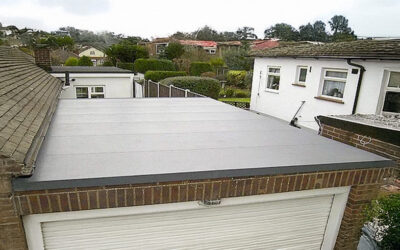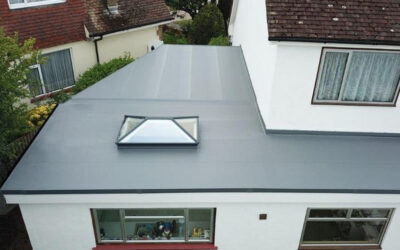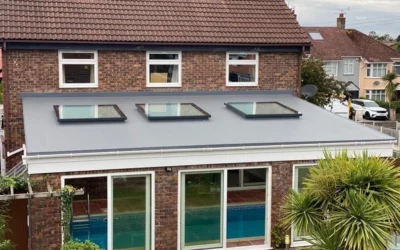We do love a chat about the good old British weather…
The UK is well known for its… interesting weather. Strictly speaking, we are meant to have four seasons. In reality, we can experience incessant rain one day and wall-to-wall sunshine the next.
For example, this week we have been enjoying unseasonably high temperatures – London was basking in 22ºC sunshine just a few days ago. Yet amber warnings have been issued across central Britain, as Storm Eileen tracks eastwards, bringing heavy rain and strong winds. Gusts reached up to 75mph over the Pennines.
So how can the weather affect your flat roof and what should you do to ensure it continues to protect you and your belongings inside no matter what’s going on outside?
The risk of wind uplift
Wind can approach a building from any direction. Location and exposure of a building has an impact on wind uplift. For example, the South and South East of England typically have far lower average wind speeds than Northern England, Scotland and Northern Ireland. You are also much more likely to experience higher wind speeds in exposed areas, including rural hills or the coast. Tall buildings surrounded by other properties in urban areas have a lower risk of wind uplift than buildings without protection.
When wind hits a roof, the edge zone is the most likely part of your roof to be affected by wind uplift. Therefore, when installed, these corner and perimeter zones need a greater resistance to these effects or air might be able to get underneath the roof covering, causing significant damage to your flat roof.
This means that before installing a flat roof in a higher risk area, a wind calculation needs to be carried out to ensure that every component is capable of withstanding wind uplift.
The risk of rain
Although called a flat roof, a flat roof is actually very slightly pitched, meaning that rain is able to drain away. However, over time, poorer quality roofs can weaken over time. Once water is able to penetrate the roofing membrane, it will soak any decking and insulation.
Rain can also pool in any sagging flat roofing membrane, adding undue weight to your roof’s structure until the membrane is unable to cope with the load, and splits.
The biggest issue is that it can be almost impossible to spot any problems until significant damage has been done. By the time you have noticed, your flat roof may be beyond repair.
What can be done?
If your flat roof is fairly old or constructed of felt, you must ensure that you regularly check its condition. The moment you notice any signs of rainwater pooling, sagging in the roof membrane, excessive moss or algae on your flat roof or leaking in the ceiling, you should call in professional roofing contractors to see whether your roof needs to be repaired or replaced.
If the time has come to replace your flat roof, it is imperative that you opt for a high-quality product that will stand the test of time. High-Tech Membrane Roofing’s preferred flat roofing membranes have been rigorously tested on both residential and commercial properties. Maintenance-free and engineered to withstand wind, rain and damaging UV rays, our single-ply, uPVC roofing systems are guaranteed to protect your home from the very worst the British weather has to offer.
Yes, guarantee. With our LIFETIME guarantee, you are 100% safe in the knowledge that you will benefit from your investment for the rest of your life.




















